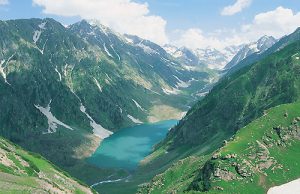The story of Malala Yousafzai is one of inspiration and heroism. A young girl targeted by the Taliban after advocating for women’s education (Yousafzai – Lamb 5). In an effort to silence her voice they would in turn only strengthen her resolve and influence as an activist.
Malala Yousafzai was born in the Swat Valley, a region within the Pakistani province of Khyber Pakhtunkhwa (Yousafzai – Lamb 5). It is a beautiful mountainous land filled with “high-snow-topped peaks, green waving fields and fresh blue rivers” according to Malala Yousafzia. Once a semi-autonomous region under the control of the British, the Swat Valley has had a long and rich history (Yousafzai – Lamb 5). This history and way of life however became threatened once the Taliban began gaining traction in the region early in the 21st century (Paracha).
This wave of religious conservatism began the shift of values of the valley, things such as women’s education and even dancing were outlawed in the region (Yousafzai – Lamb 5). In 2012 these tensions came to head when Malala was attacked by Taliban members on her way to her school, leaving her critically wounded with a gunshot wound to her head (Yousafzai – Lamb 5). This incident would prevent Malala from returning home to her native Pakistan due to threats from the Taliban. She instead would go on to advocate for women’s rights from abroad, during this time she would publish her critically acclaimed memoir ‘I am Malala’ (Yousafzai – Lamb 5).
The reception of the memoir has been one of mixed emotions however. In the West her story has been praised for its bravery and poignant message, opening up a world that many have never read about or had access too (Zubek). Her message of ‘pens and books instead of guns and violence’ has captured the minds of many and lead to further advocacy of education for all (Zubek). Yousafzai was even co-awarded the Nobel Peace Prize in 2014 for her “struggle against the suppression of children and young people and for the right of all children to education” (Malala). Back in Pakistan however the reception was very different entirely. Her book was banned one month after its publication across the entirety of Pakistan’s private school system and it is non existent on bookshelves across the country (Zubek). Publicly Malala Yousafzai is seen as not truly representing the people of Pakistan and as a puppet for Western nations, although privately to many she is seen as a person to be admired and a hero to school children across the nation (Zubek). This begs the question of who the target audience of ‘I am Malala’ truly was and if it was received how she’d initially hoped or intended. On one hand presenting her homeland in a negative light was bound to polarize herself from those opposing her, on the other hand to do so would be sure receive support from those who would agree with her message and campaign for global education.
Additional Links
Swat Valley

A picture of the Swat valley, often regarded as the ‘Switzerland of the east’ (Yousafzai – Lamb 5).
Malala Yousafzais’s Nobel Peace Prize acceptance speech
References
Yousafzai, Malala, and Christina Lamb. I Am Malala: The Girl Who Stood Up for Education and Was Shot by the Taliban. N.p.: Little, Brown, 2013. Print.
Paracha, Nadeem F. “The Pakistan Zeitgeists: A Nation through the Ages.” – Pakistan. N.p., 2014. Web. 19 Sept. 2016.
Zubek, Ewa. “She Is Malala | Darling of the West, Public Enemy in Pakistan.” The Culture Trip Global Food Art Culture Travel Recommendations She Is Malala Darling of the West Public Enemy in Pakistan Comments. N.p., n.d. Web. 19 Sept. 2016.
“Malala Yousafzai – Facts.” Malala Yousafzai – Facts. N.p., n.d. Web. 19 Sept. 2016.
Anonymous
September 15, 2016 — 7:04 pm
eva beln ruiz
September 20, 2016 — 9:14 am
Andrew
I enjoyed your blog much to the fact that I wrote about Malala as well. However, in your blog you did an excellent job pulling quotes from the book and being able to focus your attention strictly on how & why she was shot, and even how it impacted her society as well as our society. Your question at the end was very thought inspiring to me as I had not thought of it previously and lead me to believe that her book was not a call to action necessarily for her people, but people across the world to come and assist.
Eva